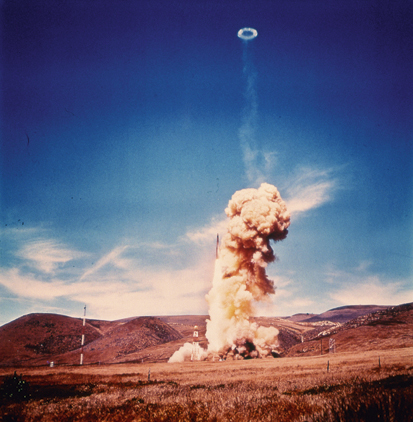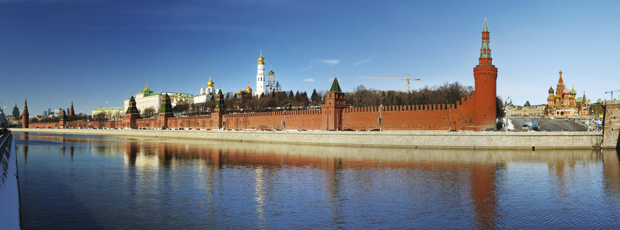In January 1976 New York’s late-lamented National Lampoon produced a bicentennial calendar as a contribution to the general rejoicing. For every day of that year a selection of disastrous news events was commemorated. Presidents of the United States were cut down, marine life was wiped out by oil spills, native Indian women and children were butchered by the US cavalry, young girls leapt to their deaths from blazing sweat shops, thousands of sheep were felled by army nerve gas shells, 11 military incursions into Canada were ignominiously repulsed — and so on. The calendar portrayed 200 years of American history as one long disaster. Repeated nuclear accidents formed a significant part of the farcical story: 13 were logged in. Between 1958 and 1974 nuclear warheads had been scattered like confetti the length and breadth of the United States.
In his extensively researched history of nuclear safety, Command and Control, Eric Schlosser shows that the grim picture painted by the satirical monthly barely scratched the surface of the problem. Figures obtained by Schlosser from the Defense Atomic Support Agency reveal that over this period there were actually several hundred ‘Accidents and Incidents Involving Nuclear Weapons’. These mishaps ranged from the ludicrous to the miraculous. In 1960 a fatal nuclear exchange was narrowly averted after a US air force computer had identified a rising moon over Norway as a ‘99.9 per cent certain’ incoming Soviet missile strike. In 1961 a B-52 bomber broke up over North Carolina and released a four-megaton hydrogen bomb. This failed to explode when it hit the ground because one switch (out of ten) remained in the safe position.
Schlosser brings his list of accidents to life by telling the story in minute detail of an emergency in September 1980 in Arkansas, in a missile complex housing a Titan II, the largest intercontinental ballistic missile that the United States ever deployed. Despite the fact that the Titan II had been declared obsolete in 1967 the generals running the US air force Strategic Air Command (SAC) refused to give it up. The rocket was the height of a nine-storey building and carried a nine-megaton warhead which had an explosive force three times as powerful as all the bombs dropped during the second world war. And SAC had 54 of them, ‘the biggest guns in the western world’.
These were kept fully armed in their silos throughout the 1970s, even as they became more and more decrepit and less and less likely to reach their targets. The accident in Arkansas occurred one evening when an air force fitter carrying out routine maintenance dropped a large metal socket from the top of the missile that bounced at the bottom and pierced one of the fuel tanks. Later that night, despite heroic efforts by the ground crew, the missile exploded, blowing its warhead right through the concrete roof of the silo and 1,000 feet up into the air. But the warhead itself did not go off, and since it was packed with uranium rather than plutonium there was little radioactive contamination.
These catastrophes were not confined to the United States. In 1966 a B-52 bomber refuelling over Spain exploded and dropped four hydrogen bombs, an incident that received worldwide coverage. Far more seriously, and almost unpublicised, another B-52 ‘on patrol’ over Greenland in 1968 set itself on fire. The crew bailed out and the plane, containing the standard four hydrogen bombs, flew itself around in circles until it crashed into the ice at 600 mph. The consequent explosion destroyed the USAF base and scattered plutonium over three square miles. The contaminated ice was shipped to South Carolina where it eventually filled 147 railway wagons. Many bomb parts were never found. SAC lied about the accident to the Danish government, claiming that the B-52 had been on a training flight. The fire occurred because one of the pilots had put a pile of foam-rubber cushions beneath his bottom and these had blocked a heating vent
Maryland, New Jersey, Louisiana, Kentucky, Texas, Morocco, Japan and RAF Lakenheath in Suffolk have been the scenes of further ‘miraculous’ escapes. And the B-52 continues to fly and continues to crash today. Some years ago a B-52 ploughed across the road half-a-mile from where I live in Oxfordshire, having made an emergency landing on its way to RAF Upper Heyford. The aircraft had to be dismantled because the private runway on which it had been forced to land was too short for take-off, even when the machine’s bomb load had been packed up and driven off along the B4022.
Sooner or later one of these weapons will go off and Schlosser makes the point that in human affairs ‘accidents are normal’. He quotes a study made after the partial meltdown of the nuclear power station at Three Mile Island which suggested that ‘our ability to organise does not match the inherent hazards of some of our organised activities’.
Of course accidents are not the only problem. There is also the human need to rock ’n roll. In the 1970s it was estimated that most military personnel, including those handling nuclear warheads, were regular drug-users. Hashish was thought to be the reason why a fully armed MiG 17, flown by a Cuban defector, was able to land at a Florida air base in 1971 and park beside Air Force One before anyone noticed that it had entered US airspace.
The early section of Command and Control, when Schlosser provides a rather starry-eyed and patriotic account of the activities of the US 8th Air Force in wartime Europe, the Manhattan Project and Washington’s decision to destroy Hiroshima and Nagasaki, is less impressive. But his hair-raising record of subsequent nuclear near misses is a valuable addition to the public record.
There is some irony in the fact that it has been the people of the United States who have been most at risk from the atrocious weapons that their government invented to protect them. But there is also an unasked question about the long list of misadventures that the ‘miracle’ theory fails to answer. Could it be that these accidents are not as dangerous as they seem — simply because nuclear fission, the chain reaction and consequent annihilation are most unlikely to occur unless the pre-programmed sequence of explosions follows its split-second sequence?
Even if that be the case, the single-switch incident in North Carolina in 1961, and the fact that we have never had an account of the Soviet Union’s parallel events, dispel reassurance. As President Yuri Andropov said in 1983 in response to Reagan’s speech describing his country as ‘The focus of evil … an evil empire’, followed later that week by the announcement of Star Wars: ‘This is insane.’
Andropov was right. And the instability of a nuclear-armed world following the disappearance of his evil empire makes it more insane still. Schlosser, in a fine conclusion, describes the continued existence of thousands of these missiles as ‘a collective death-wish, barely suppressed’.
Got something to add? Join the discussion and comment below.
Get 10 issues for just $10
Subscribe to The Spectator Australia today for the next 10 magazine issues, plus full online access, for just $10.
Available from the Spectator Bookshop, £20. Tel: 08430 600033
You might disagree with half of it, but you’ll enjoy reading all of it. Try your first month for free, then just $2 a week for the remainder of your first year.














Comments
Don't miss out
Join the conversation with other Spectator Australia readers. Subscribe to leave a comment.
SUBSCRIBEAlready a subscriber? Log in